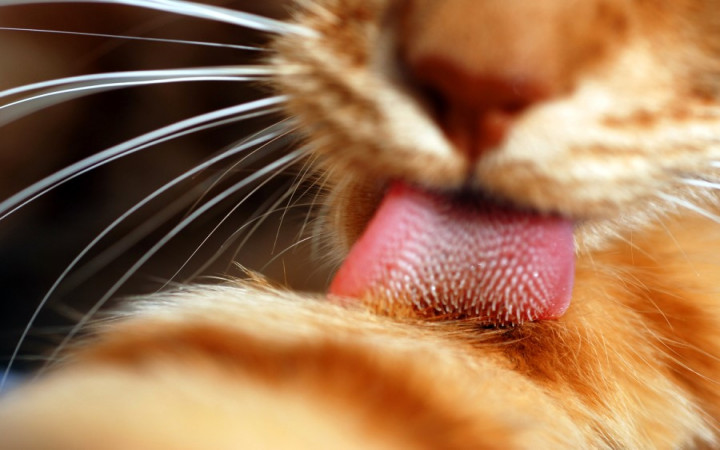Do you have pets? Many people who welcome animals into their lives will tell you that pets enrich their lives beyond measure. Whether it's a dog, cat, turtle, fish, or something more exotic, pets can make life more fun and exciting for sure.
For example, when you get home after a long day of school, there's nothing quite like an excited dog waiting to give you a big, sloppy kiss on the cheek. That wagging tail can turn a frown upside-down even after the worst of days.
Of course, if you have a cat, you might not be greeted by a wagging tail. Instead, it might be a soft cuddle. And you probably wouldn't want a sloppy, wet kiss from a cat anyway! Why? Have you ever felt a cat's tongue? It's rough like sandpaper!
A cat's tongue is covered with papillae, which are small, hook-shaped growths that point toward the back of the mouth. They're sort of like hairs, because they're are made from keratin, which is the same material that your fingernails are made from.
Under a microscope, a cat's tongue looks like a rough surface filled with thousands of tiny teeth. Although they make a cat's tongue very rough, papillae play an important role in the life of the cat.
If you have a cat or have ever spent much time around one, you know that cats tend to be quite meticulous about their hair. Many cats spend a lot of time every day carefully grooming themselves. And how do they do that? That's right! They groom themselves with their tongues, and the papillae act in much the same way that a regular comb does.
Unfortunately, there's a downside to papillae when it comes to grooming. Due to their shape, papillae tend to trap any hairs that come loose during grooming. What gets stuck on a cat's tongue usually gets swallowed. That's why many cats occasionally have to hack up hair balls that have accumulated in their throats and stomachs.
Papillae also come in handy when hunting and eating. Although cats have strong jaws, papillae help cats to hold prey tight in their mouths. When it comes time to eat, papillae also help cats pick up small bits of food that might otherwise be missed or wasted.
Many people have often assumed that a cat's tongue also is used like a scoop to lap up water when it drinks. While the tongue is an important part of the drinking process for a cat, it wasn't until recently that scientists made an incredible discovery about how exactly the process of drinking occurs.
Using high-speed photography, scientists were able to break down exactly what occurs when a cat drinks water. Instead of curling the tongue into a scoop, cats actually curl the upper side of the tongue downward and then dart it rapidly across the surface of the water before quickly drawing it upward.
This particular action causes a column of water to rise up from the surface. The cat then closes its mouth quickly, just in time to catch the water before gravity draws it back down to the surface. How quickly does all of this occur? Very quickly! Cats lap their tongues when drinking at the rate of about four times per second, which explains why the process is invisible to the naked eye.




